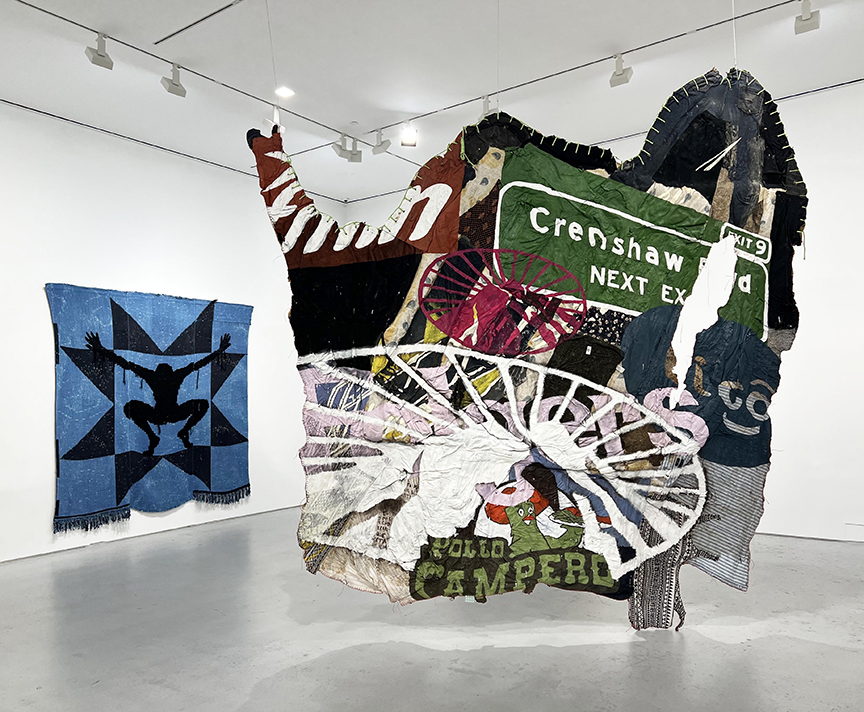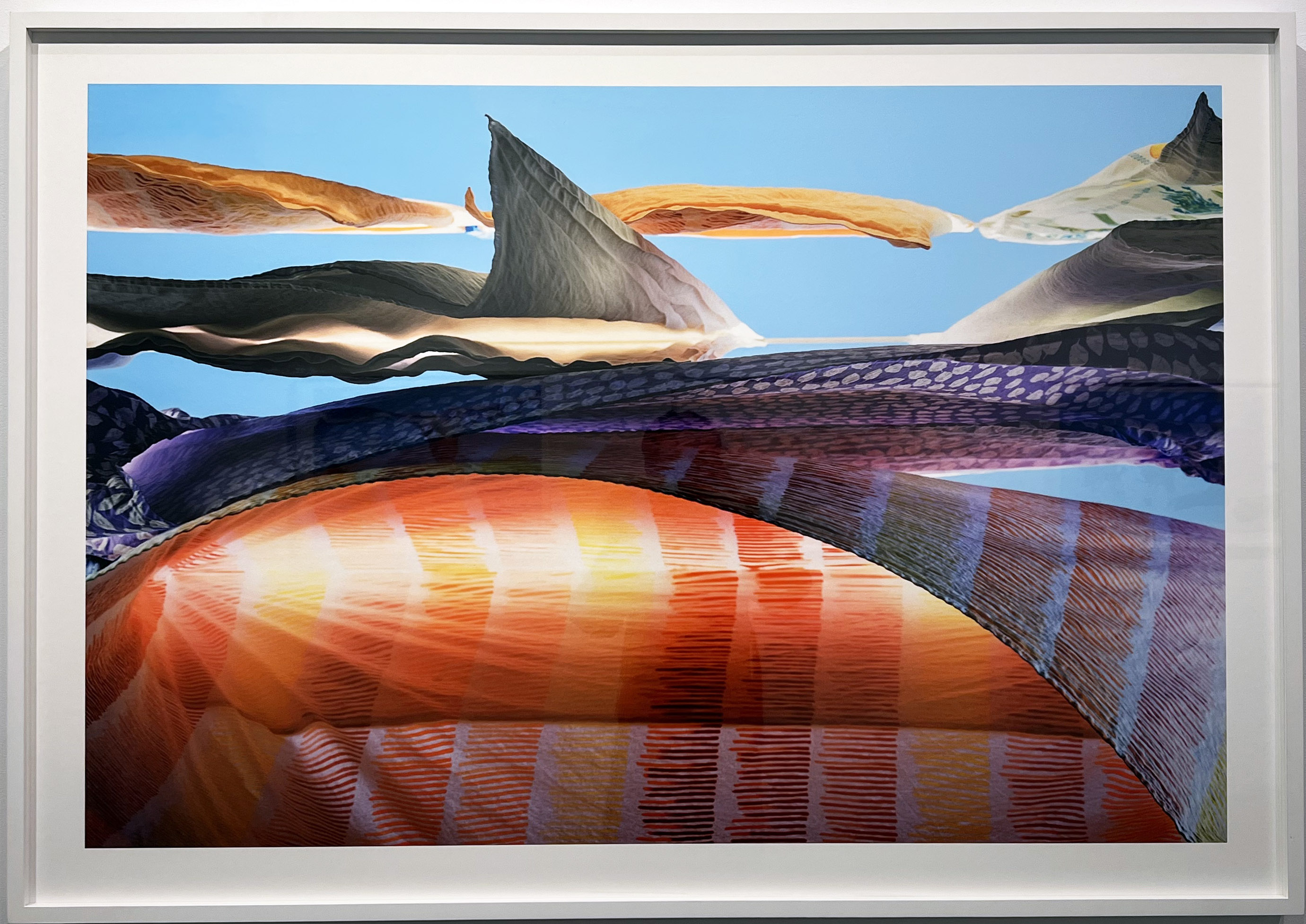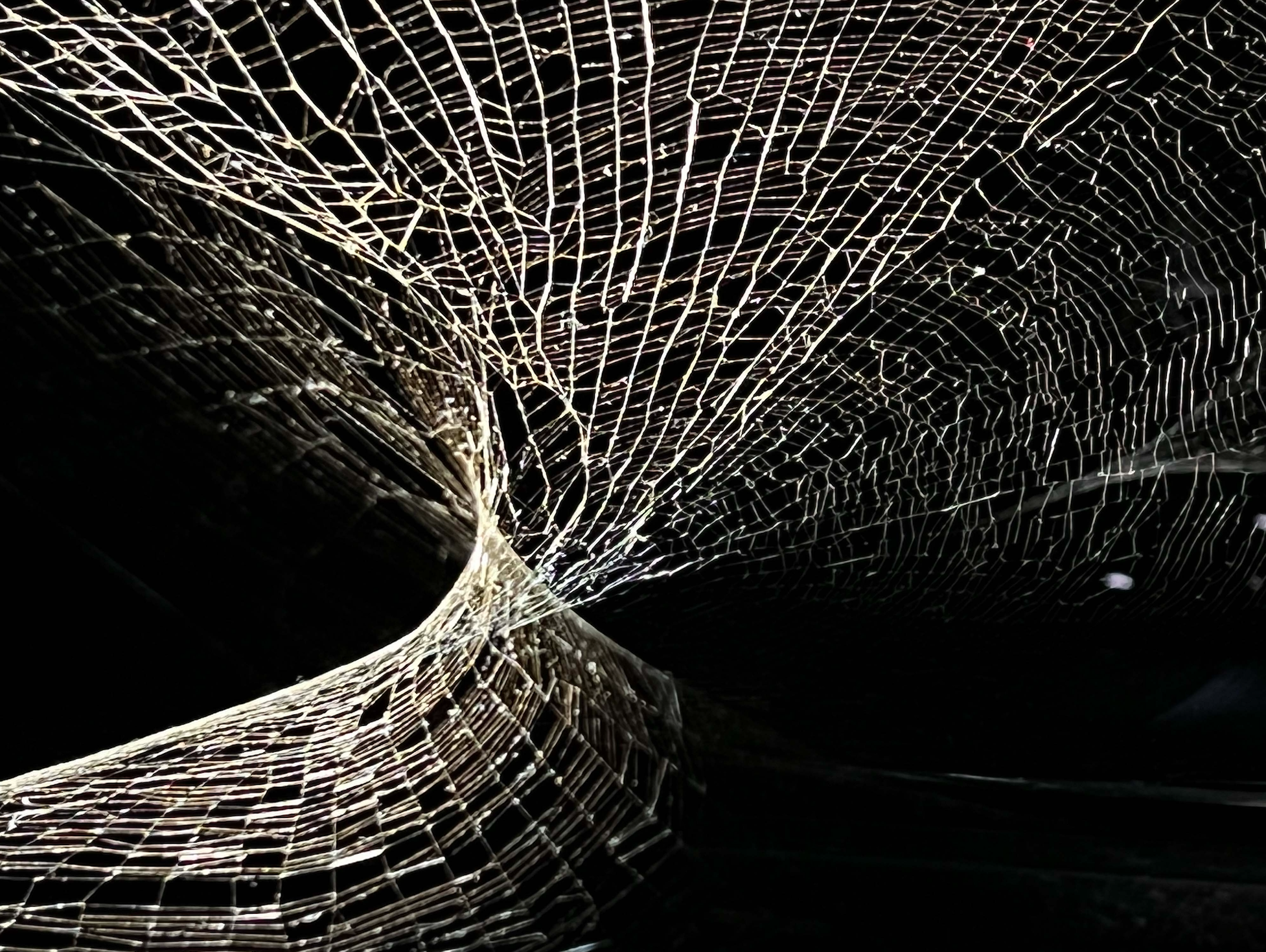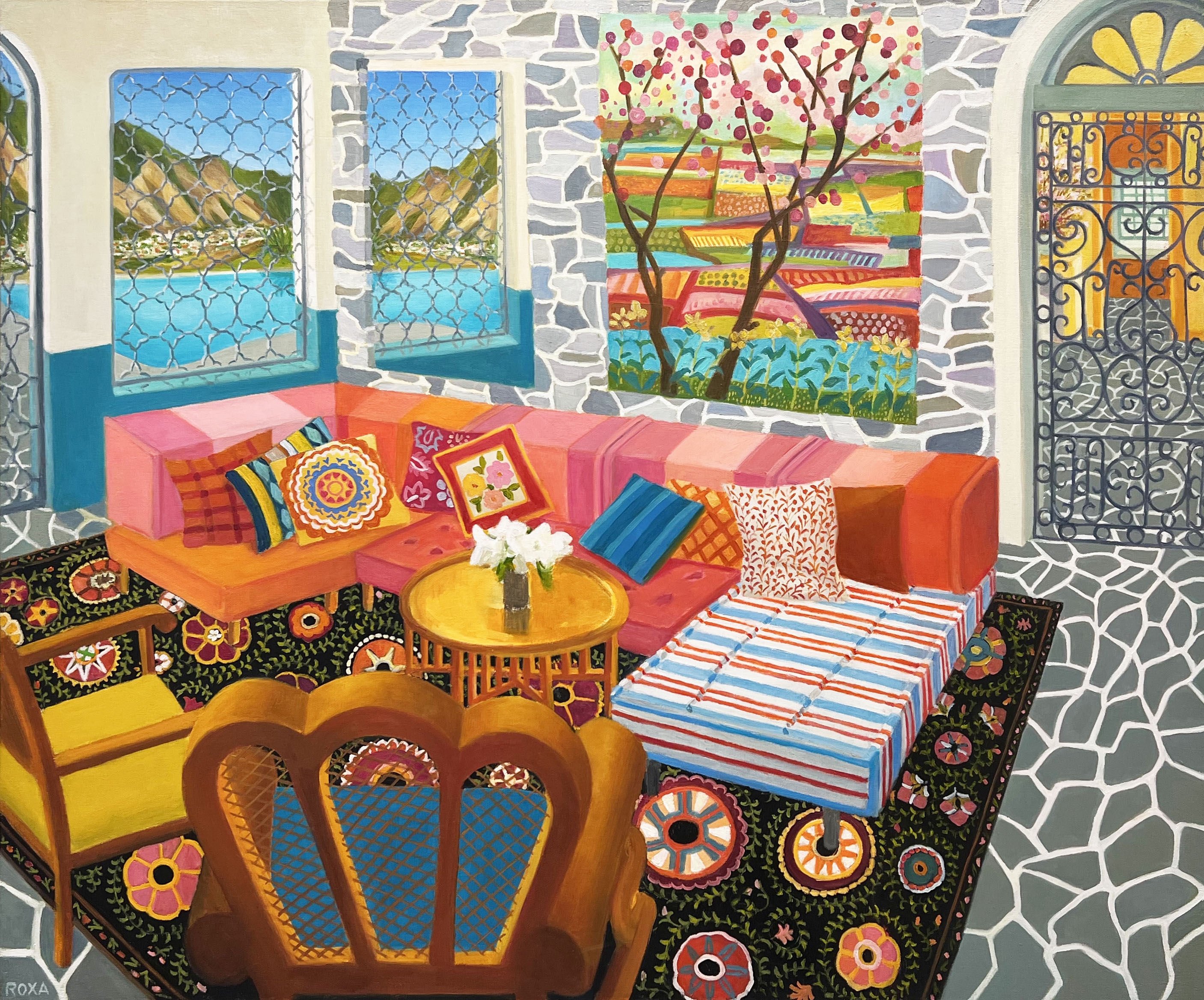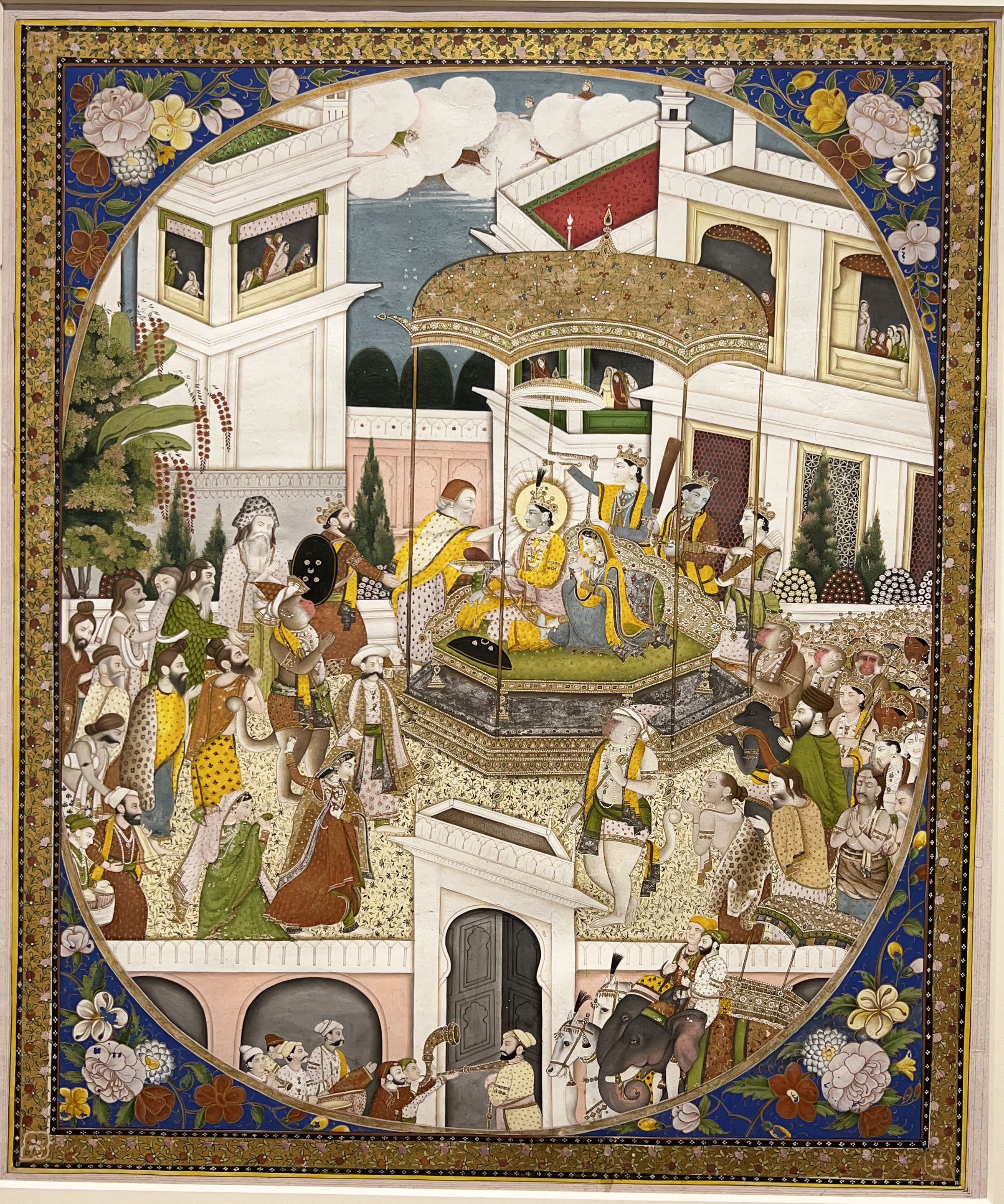Eddie Rodolfo Aparicio’s ‘Holbein En Crenshaw,’ a rubber cast of a tree on a LA street dominates ‘The New Bend,’ a standout show of textile-related work curated by Legacy Russell at Chelsea’s Hauser & Wirth Gallery. Layered imagery including a highway exit sign, distorted wheel-like shapes, and advertisements crowd together on one side of this hanging piece, recreating the bombardment of information pedestrians and motorists experience on city streets. On the other side, the rough texture of the cast tree with its burls and imperfections suggests the difficulties of urban life, even for plants. Aparicio explains that his intention is to connect beleaguered, non-native trees to the reception of migrant workers in California while also recognizing the rootedness of both in LA life. (On view through April 2nd.)
